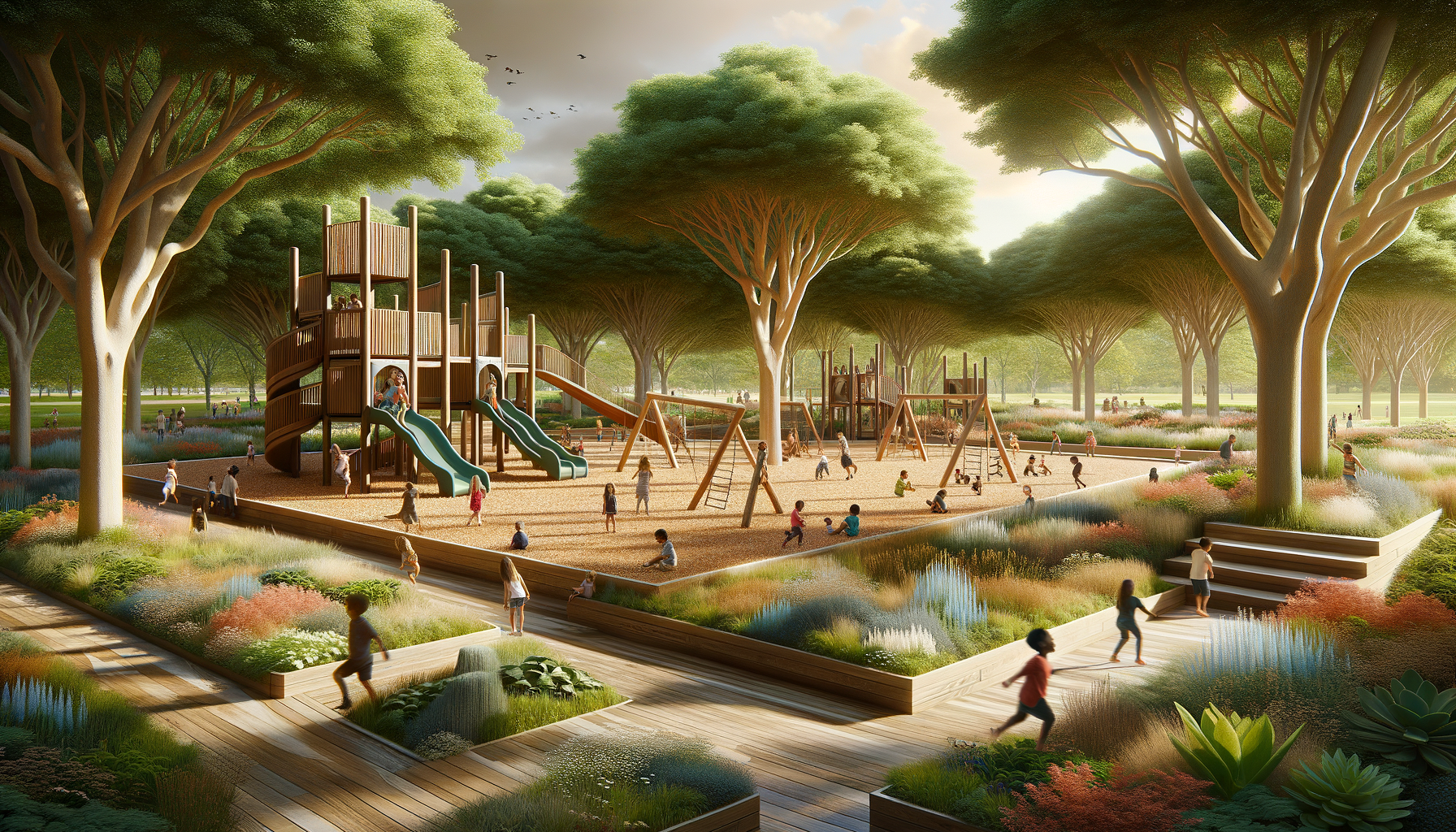
The Hidden Environmental Impact of Playground Mulch: Beyond Safety Standards
The Hidden Environmental Impact of Playground Mulch: Beyond Safety Standards
When we think about playground mulch, safety typically comes first in our minds. However, there’s an equally important story unfolding beneath the surface – one of environmental stewardship and sustainable practices. The choices we make in playground surfacing materials and maintenance methods have far-reaching implications for both our children’s safety and our planet’s health.
The Environmental Advantage of Natural Surfacing
Engineered wood fiber mulch stands at the forefront of sustainable playground solutions. Unlike synthetic alternatives, natural mulch materials come from renewable resources and can be responsibly sourced from managed forests. This creates a cycle of sustainability where new trees are planted to replace those harvested, contributing to ongoing forest management and carbon sequestration efforts.
Waste Reduction Through Smart Management
Modern mulch management practices are revolutionizing how we approach playground maintenance. Digital monitoring of mulch depths and compression rates allows for precise material ordering, significantly reducing waste. When combined with proper installation techniques and regular maintenance, these practices extend the life of playground surfacing while minimizing environmental impact.
Water Management and Soil Health
Natural mulch plays a crucial role in playground ecosystem health. Properly maintained mulch helps manage water runoff, reducing erosion and supporting natural groundwater recharge. The organic material gradually breaks down, enriching the surrounding soil and supporting local plant life. This creates a more resilient and environmentally integrated play space that benefits both users and local wildlife.
Sustainable Supply Chain Innovation
The evolution of mulch delivery and installation processes has brought significant environmental benefits. Modern technology platforms optimize delivery routes and installation schedules, reducing fuel consumption and emissions. These efficiencies, combined with bulk delivery options, minimize the carbon footprint associated with playground maintenance while ensuring consistent safety standards.
Looking Beyond Initial Installation
Sustainable playground management requires thinking beyond the initial installation. Regular maintenance programs that incorporate environmental best practices help extend the life of surfacing materials while maintaining their protective qualities. This approach not only ensures ongoing safety compliance but also reduces the frequency of complete material replacement, further minimizing environmental impact.
Community Impact and Education
Environmentally conscious playground maintenance creates valuable teaching opportunities for children and communities. When playground operators choose sustainable materials and practices, they demonstrate environmental stewardship in action. This visible commitment to sustainability helps foster environmental awareness and responsibility in the next generation.
The Future of Sustainable Play Spaces
As we continue to advance our understanding of environmental impact, the future of playground surfacing looks increasingly green. Digital solutions that optimize material usage, innovative installation methods that reduce waste, and integrated maintenance programs that extend material life are all contributing to more sustainable play spaces. These developments prove that safety and environmental responsibility can work hand in hand to create better playgrounds for everyone.